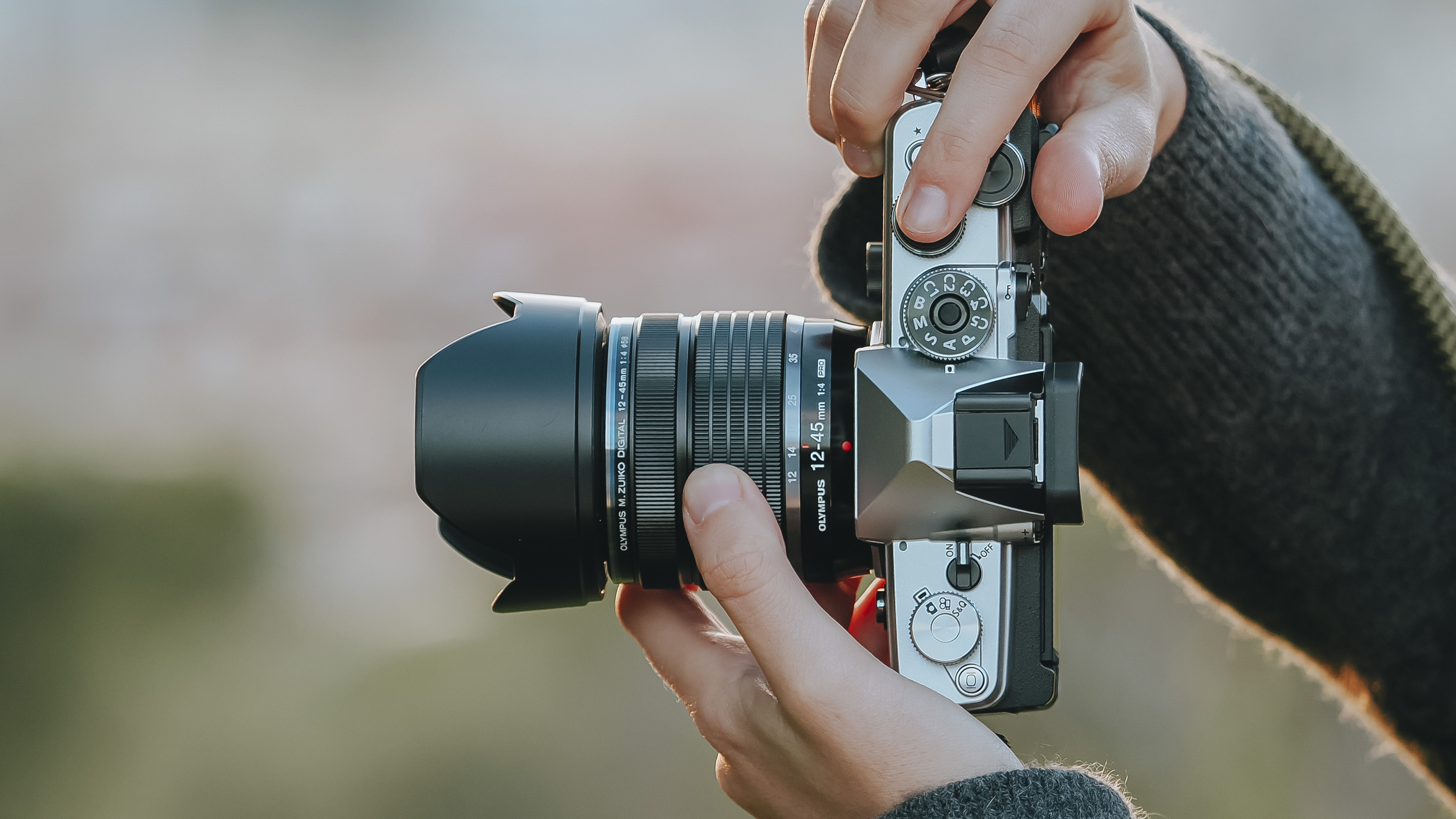OM System’s new OM-3 is the stunning retro Pen-F reboot and Fujifilm rival we needed
Fans finally get what they've been asking for

- Retro design inspired by the original Olympus OM-1 film SLR from 1973
- New line for OM System, features a creative color mode dial like in the Pen-F
- Sits between the OM System OM-1 II and OM-5, priced $1,999 / £1,699 / AU$3,199 body only
- Three lenses get the mark II treatment; M.Zuiko Digital 17mm F1.8 II, 25mm F1.8 II and ED 100-400mm F5.0-6.3 IS II
OM System just doubled down on its retro appeal with a new OM-3 mirrorless camera. It's a stunning take on the original Olympus OM-1 film SLR from the 1970s, and the closest fans are getting to a reboot of 2016's popular digital Olympus Pen-F.
Costing $1,999 / £1,699 / AU$3,199 body-only, or $2,299 / £1,999 / AU$3,799 with the 12-45mm F4 Pro lens, the OM-3 sits between the flagship OM-1 II and the enthusiast-level OM-5. It delivers OM System features we already know; the same stacked 20MP micro four thirds sensor and TruePic X processor as the OM-1 II, together with class-leading in-body image stabilization rated up to 7.5EV and quad-pixel autofocus with AI-subject detection, wrapped in a robust IP53-rated weatherproof body.
The OM-3 also features a creative dial à la Pen-F. Olympus was ahead of the curve with the Pen-F, since we now see the likes of the Fujifilm X-T50 and Panasonic Lumix S9 capitalizing on the interest in custom color profiles with dedicated controls providing quick access to a catalog of custom looks.
In the OM-3, we get a creative dial with four modes; color profile, monochome profile, Art Filters plus Color Creator. Color profile has four customizable settings that emulate film looks, as does the Monochrome profile with its four black-and-white looks.
There's much to like about the OM-3. It packs the same power as the pricier OM-1 II into a more affordable, retro body with direct access to key features. This is a camera that OM System fans in particular have been waiting for, and a compelling Fujifilm alternative.

More than a pretty face
The OM-3 is a stunner that weighs under 500g and is smaller than the OM-1 II, but its appeal isn't just surface-deep. It's a highly robust metal camera that's dustproof, splashproof and freezeproof, plus it has a well thought-out design with direct access to many of its powerful, modern features.
There's a new dial for photo, video, or slow and quick motion options, with slow motion recording up to 60fps in 4K and up to 120fps in Full HD. OM System has introduced new Cinema modes with Log color profiles for video that maximize the dynamic range of the camera for grading clips later.
Get daily insight, inspiration and deals in your inbox
Sign up for breaking news, reviews, opinion, top tech deals, and more.
There's also a new button to access computational photography features directly, with OM System's full suite of modes to hand; Live ND filters with six levels of strength from ND2 to ND64, the graduated ND filter effect introduced in the OM-1 II, live composite for light trails, together with a High Res Shot mode to increase resolution up to 80MP, plus a focus stacking mode. These are clever features that minimize the accessories you need and time spent editing at a computer.
Price-wise, the OM-3 is pitted against the likes of the Fujifilm X-T5, despite its lower pixel count and smaller sensor size, which will always be a strike for some. However, I can't think of a faster camera for the money – this 120fps-shooting stunner could be the ultimate travel and outdoors camera, especially for those with an eye for design. OM System also launched mark II versions of three of its lenses alongside the camera, all of which add weather-sealing to the original versions; the M.Zuiko Digital 17mm F1.8 II, the 25mm F1.8 II and the ED 100-400mm F5.0-6.3 IS II. I can see the 17mm lens being a lovely pairing with the OM-3 in particular for street photography. We're currently conducting a full OM-3 review, coming soon.

You might also like
- Olympus PEN-F review
- Forget Samsung’s Space Zoom – this OM System super telephoto zoom lens can shoot up to a staggering 2400mm
- The best travel camera for 2025: the finest choices for your adventures

Tim is the Cameras editor at TechRadar. He has enjoyed more than 15 years in the photo video industry with most of those in the world of tech journalism. During his time as Deputy Technical Editor with Amateur Photographer, as a freelancer and consequently editor at Tech Radar, Tim has developed a deeply technical knowledge and practical experience with cameras, educating others through news, reviews and features. He’s also worked in video production for Studio 44 with clients including Canon, and volunteers his spare time to consult a non-profit, diverse stories team based in Nairobi. Tim is curious, a keen creative, avid footballer and runner, and moderate flat white drinker who has lived in Kenya and believes we have much to enjoy and learn from each other.
You must confirm your public display name before commenting
Please logout and then login again, you will then be prompted to enter your display name.